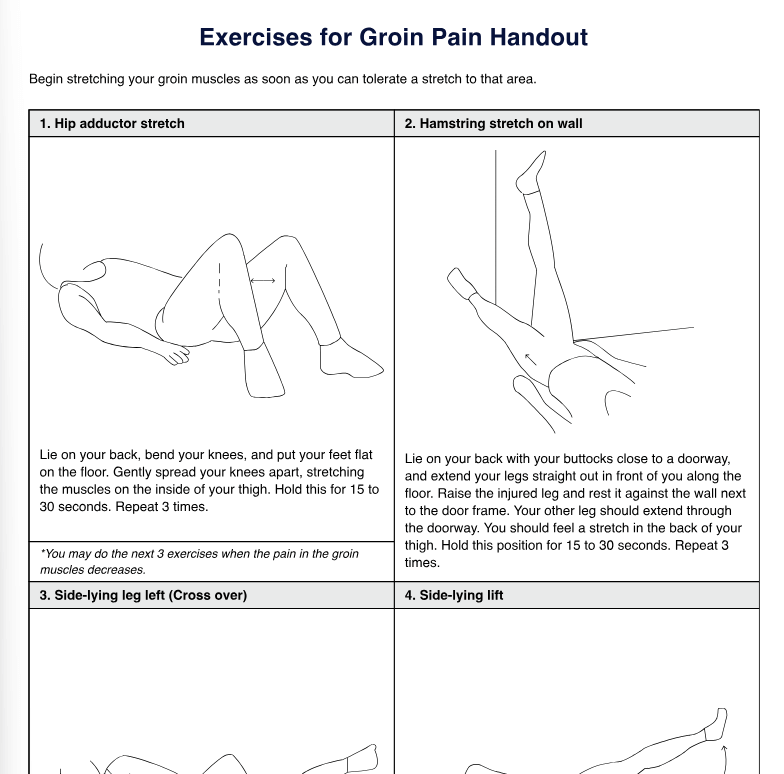Groin pain is commonly caused by muscle strains, sports injuries, or overuse. It can also result from conditions like hernias, hip joint issues, or infections.

Exercises for Groin Pain Handout
Discover effective Exercises for Groin Pain with our comprehensive guide, including tips and downloadable handouts for healthcare professionals and patients.
Exercises for Groin Pain Handout Template
Commonly asked questions
Recovery time varies depending on the severity of the muscle strain and adherence to the rehabilitation program. Generally, mild strains may heal in a few weeks, while severe strains could take several months.
It is important to rest and avoid activities that worsen the pain. However, specific rehabilitation exercises guided by a physical therapist or a healthcare provider can aid recovery and should be gradually incorporated into an exercise regimen.
EHR and practice management software
Get started for free
*No credit card required
Free
$0/usd
Unlimited clients
Telehealth
1GB of storage
Client portal text
Automated billing and online payments











